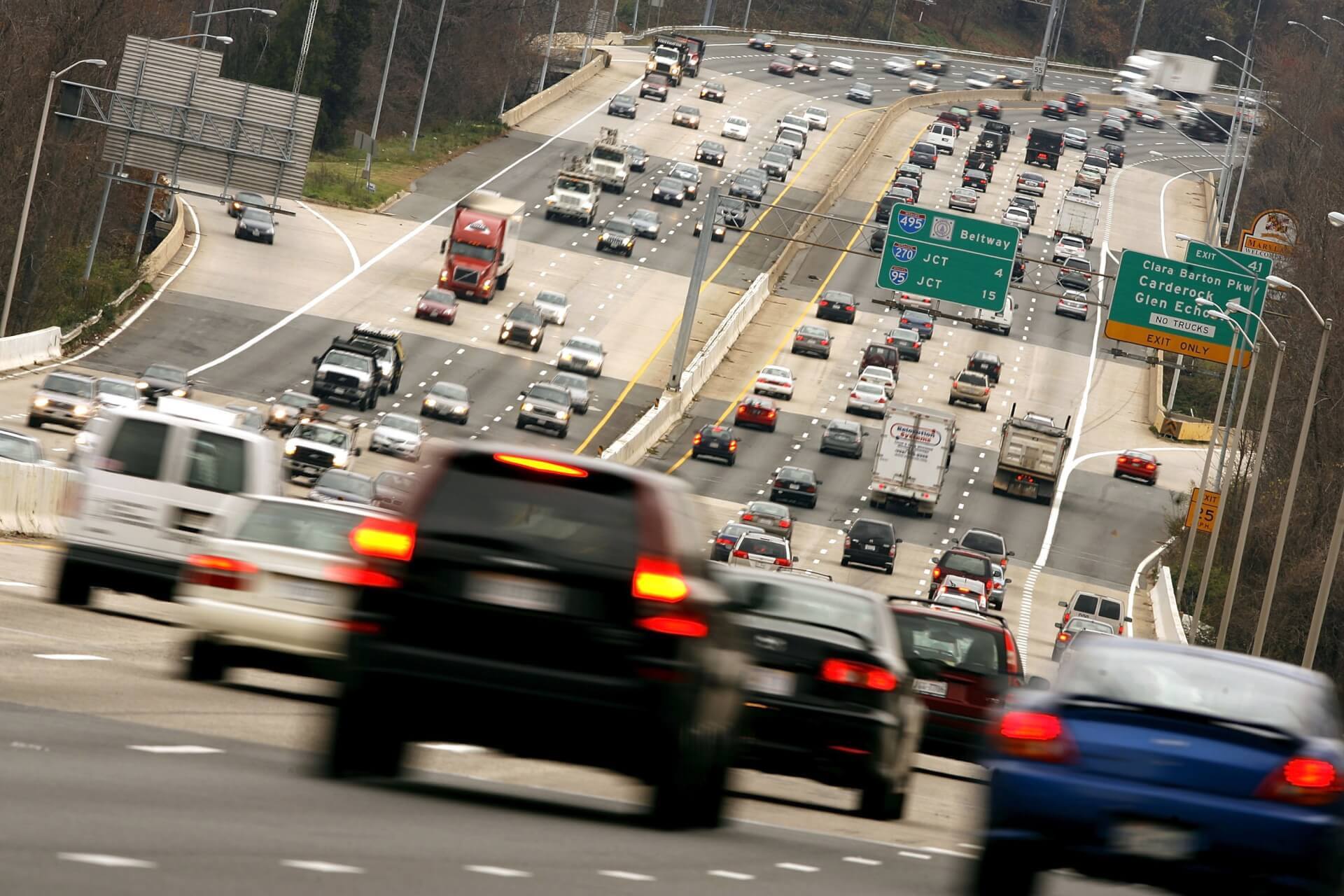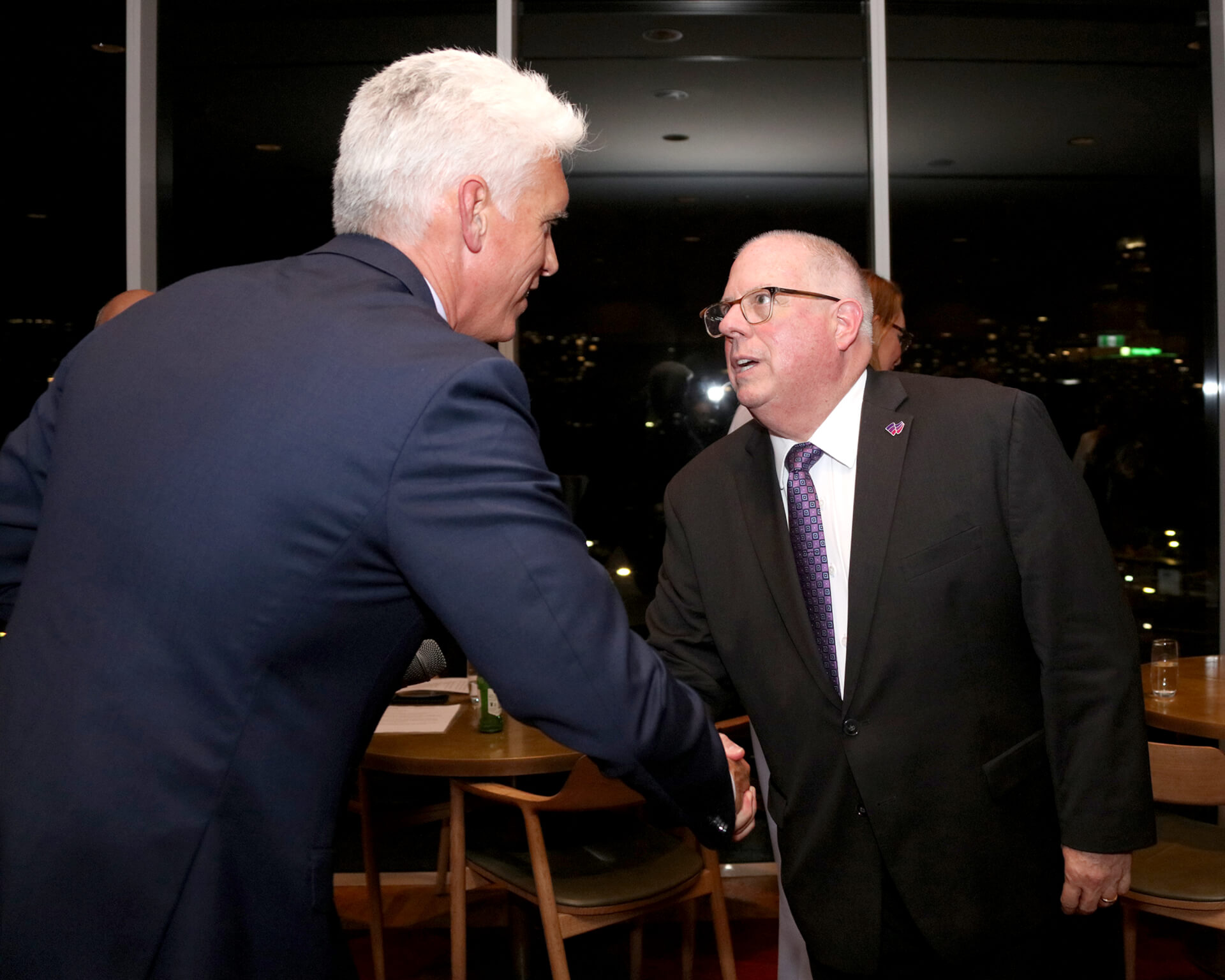MDOT Chooses Transurban for I-495/I-270 Project

The Maryland Department of Transportation and the Maryland Transportation Authority have chosen a consortium led by Transurban to handle the first phase of a major highway project in Montgomery County, the agencies announced Thursday afternoon.
The group, known as Accelerate Maryland Partners LLC, includes Tysons Corner, Va.-based Transurban USA and Macquarie Infrastructure Developments, a New York firm, as lead equity developers and lead contractors.
Dewberry Engineers and Stantec Consulting Services are the group’s designers.
The $11 billion project, announced by Gov. Lawrence J. Hogan Jr. (R) in 2017, would replace the American Legion Bridge and add four “high-occupancy toll” lanes to portions of the Capital Beltway (Interstate 495) and Interstate 270. The first phase of the project would cost about $3.7 billion.
The privately-funded lanes would allow motorists to pay tolls of varying amounts to bypass congestion in the existing lanes, which will remain free. If the state ultimately moves forward with the project, the developer will build and manage the lanes for 50 years and be responsible for maintenance on both the new and the existing lanes.
Transit vehicles, carpools with three or more people, and van-pools will be allowed to use the toll lanes free of charge. The new bridge will include a long-sought bike and pedestrian path, the state pledged.
Accelerate beat out two other groups that sought the design — or “predevelopment” — phase of the project: Accelerate MarylandExpress Partners was led by Itinera Infrastructure & Concessions and Halmar International. Capital Express Mobility Partners was led by Cintra Global, John Laing Investments, and Ferrovial Agroman U.S.
A fourth consortium, Potomac Mobility Group, expressed initial interest in the project but declined to submit a bid.
The selection is subject to approval by the MdTA board of directors and the Board of Public Works, which is made up of the governor, comptroller and treasurer.
The selection of Transurban will come as no surprise to people who have followed the project closely.
Transurban has an expansive presence in Northern Virginia, where it owns and operates more than 60 miles of express toll lanes along the Capital Beltway, I-395 and I-95.
Maryland and Virginia agreed to partner on the construction of a new American Legion Bridge in 2019, with Virginia opting to append the project onto its existing contract with Transurban rather than open it up to bid, giving the firm a perceived advantage.
Hogan included Jennifer Aument, the then-head of Transurban North America, on a trade mission to Australia, where the firm is based, in 2019. A former top Hogan aide, Amanda Allen, left the administration to join the transportation giant in 2020. She became a registered lobbyist for Transurban shortly thereafter.

Transurban CEO Scott Charlton greets Gov. Lawrence J. Hogan Jr. (R) at a reception in Sydney, Australia, in 2019. Photo by Steve Kwak/Executive Office of the Governor.
In a news release, Maryland Transportation Secretary Greg Slater praised the firm for its experience with large public-private partnership projects, its willingness to offer the state a $145 million “development rights fee,” its commitment to using union labor.
“The proposal also includes commitments for transit improvements in Montgomery County, a community grant program, Vision Zero investments, a no-interest loan program for local fleet conversions, and water quality enhancements,” MDOT and MdTA said in a news release.
“This is another step forward in addressing one of the most significant traffic bottlenecks in the nation,” Slater said in the statement.
“Though there is much more work to do with the local leaders, the community and stakeholders, the selected proposal delivers congestion relief at the American Legion Bridge, strong innovative approaches for minimizing impacts and a real multimodal approach,” he added. “I am very much looking forward to this partnership and its benefit to Maryland travelers.”
Over the life of the 50-year agreement, Accelerate Maryland Partners will invest an estimated $300 million in transit for Phase 1 South, $50 million in community grants, and $25 million to support emerging technologies, MDOT said.
The proposal also contains a “local workforce development” commitment, including partnerships with small, disadvantaged, women and veteran-owned businesses. Maryland also anticipates a Project Labor Agreement and “engagement” with local community organizations and educational institutions, according to the agencies.
Next steps
The agencies will submit a “Developer Phase P3 Agreement” to the transportation authority board next month.
Comptroller Peter V.R. Franchot (D), Treasurer Nancy K. Kopp (D) and the General Assembly’s budget committees have 30 days to review the agreement. And it will go before the public works panel in May.
If approvals are granted, the state and Accelerate Maryland Partners will have the green light to begin more in-depth design work.
In light of the difficulties encountered by the Purple Line project, a high-profile public-private partnership that saw its main subcontractor quit the project amid a dispute over cost-overruns, the state has adopted what is is calling a “Progressive P3 model” that involves bringing the private-sector partner into the process sooner.
Doing so can mitigate environmental issues, the need for private land, and utility removal costs, Slater and other officials maintain.
The State Highway Administration must also finish work on its I-495/I-270 Environmental Impact Statement, a key document that is required under the federal National Environmental Policy Act.
If the state, Accelerate Maryland and Virginia transportation officials can agree on a final design, construction, financing, operations, and maintenance plan, a “Section P3 Agreement” for the first section of the program would go to the Board of Public Works, perhaps as early as the summer of 2022.
Project encounters resistance, undergoes major changes
When Hogan and his first transportation secretary, Pete K. Rahn, unveiled the project, the governor hailed it as a way to ease some of the region’s — and the nation’s — worst traffic bottlenecks.
He also said the project would produce thousands of jobs and boost the Maryland economy, which many see as losing ground to Virginia, which has bustling private sector corridors and now rivals the District of Columbia for regional dominance.
Critics of Hogan’s plan have said it will harm the environment, result in the loss of parkland and encourage more people to drive. Opponents of “express toll lanes” say they allow upper-income people to zoom past middle-class workers who remain stuck in traffic.
In an interview with Maryland Matters last year, Aument said express toll lanes benefit all motorists, including those who use the free lanes, because of the number of drivers who are willing to pay for a quicker trip.
Although critics seize on the occasional spike in tolls, sometimes upwards of $40 per trip, Aument said most customers use the lanes on an occasional basis when a particular need arises, and pay much less.
Many industry observers were surprised when — with Maryland’s announcement looming — Aument left Transurban for a job at AECOM, an engineering firm. Pierce Coffee, a longtime top official at Transurban, was tapped to replace her.
Public resistance to Hogan’s plan has been fierce. Homeowners’ groups have formed, and members of the General Assembly has sought, unsuccessfully so far, to alter the course of the project.
The Maryland-National Capital Planning Commission (MNCPPC) and the National Capital Planning Commission have both panned the project, and the working relationship between the MNCPPC and State Highway Administration staff has deteriorated.
Formal mediation has been discussed but has not taken place.
In its first iteration, the plan was to add four lanes to all of Interstate 270, the Beltway in both Montgomery and Prince George’s counties, and the federally-owned Baltimore-Washington Parkway.
In the face of resistance from elected leaders and at the insistence of Franchot, an announced candidate for governor in 2022, the project has morphed and shrunk.
Phase 1 South, as MDOT has recast it, now includes the American Legion Bridge, the portion of I-495 that connect the bridge to I-270, and the southern part of I-270, from the Beltway to I-370 in Gaithersburg.
Decisions on whether to widen the Beltway between Bethesda and the Woodrow Wilson Bridge in Prince George’s County will not be made until Hogan is out of office (his term ends in January 2023). The federal government has shown no interest in parting with the B-W Parkway.
At the time Hogan announced his project, the morning and evening commutes lasted for hours — and accidents and bad weather often led to epic backups.
Since the COVID-19 pandemic, the nation has seen a historic rise in telework, and traffic in the corridor now flows much more smoothly. It’s unclear to what extent working from home will become a permanent feature of American life.
The Northern Virginia Express Lanes counted 59,000 average daily trips between July and September, according to a Washington Business Journal review of the company’s most recent data.
While that is down 41% compared with 2019, it is an improvement from the 33,000 average daily trips counted between April and July.





 Creative Commons Attribution
Creative Commons Attribution